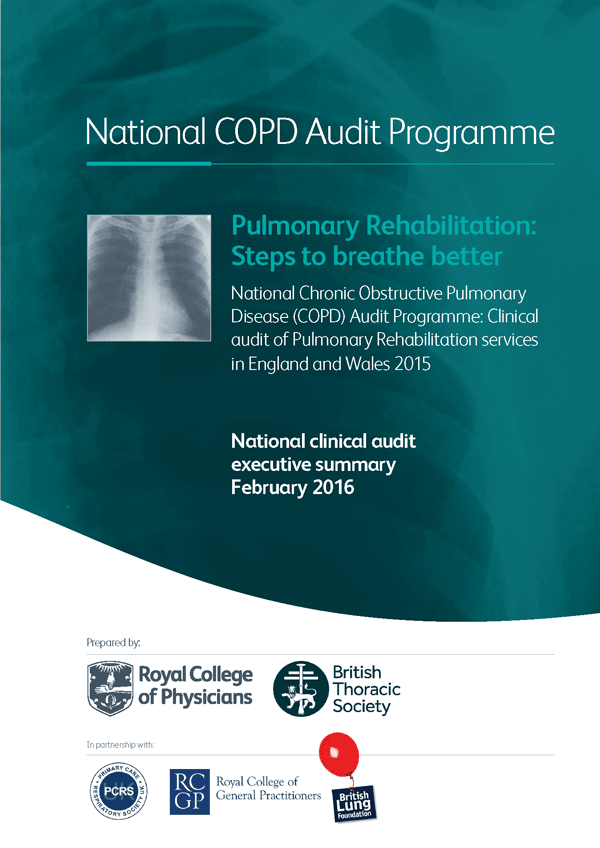National Chronic Obstructive Pulmonary Disease (COPD) Audit – executive summary of Rehabilitation report 2015 (published 2016)
This executive summary of the 2016 National Chronic Obstructive Pulmonary Disease (COPD) Audit report on Pulmonary Rehabilitation (PR) reveals substantial health benefits received by patients who complete PR treatment yet many patients are not being referred, and many patients (40%) find it difficult to complete the PR programme.
Other key findings:
- There is widespread provision of walking (95%), cycle (70%) and aerobic and resistance exercise training (89%)
- Most patients (74%) were provided with a written, ongoing individualised exercise plan following discharge. However, this means that almost one-third (26%) of patients who attend a discharge assessment are not given an individualised plan
- Significant numbers of patients who attend a PR assessment do not complete the treatment (40%)
Patients that do complete PR, on average, show substantial improvements in quality of life and ability to exercise - Patients with a full range of self-reported exercise limitation were assessed and enrolled to PR. However, only 9% of patients who have the most severe disability were enrolled to PR
Main recommendations for PR commissioners and providers:
- Commissioners and providers should ensure that robust referral pathways for PR are in place and that PR programmes have sufficient capacity to assess and enrol all patients within 3 months of referral
- PR programmes should examine their processes and ensure that they are performing exercise outcome measures to accepted standards, including exercise tests, where it is recommended
- Referrers and patients should be provided with up-to-date and clear written information about the benefits of attending and completing PR
- Programmes should ensure that they offer a sufficiently flexible service to encourage patients who are referred to PR to attend and complete the treatment (for example, flexibility about times and days of PR sessions and the availability of transport for patients who find travelling difficult)


